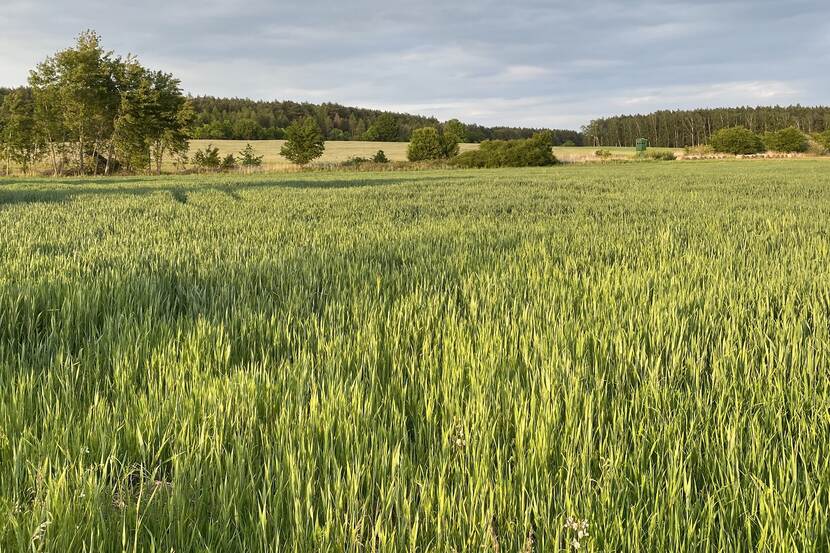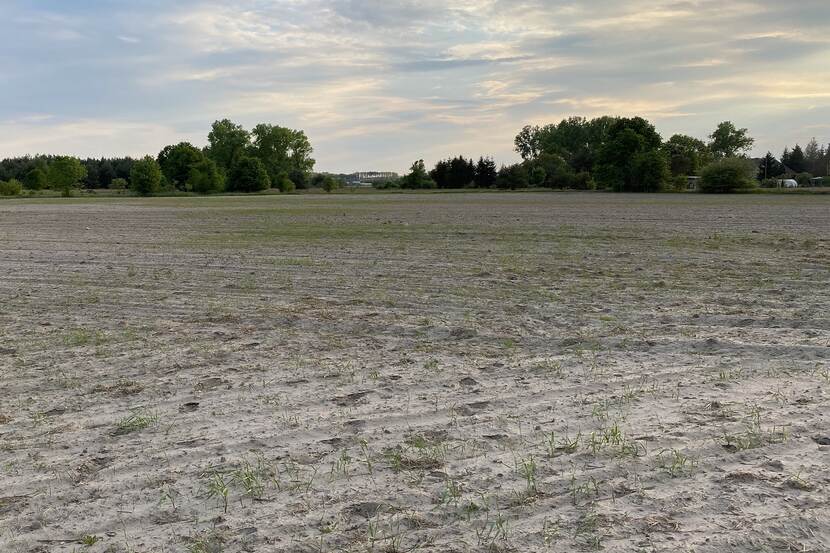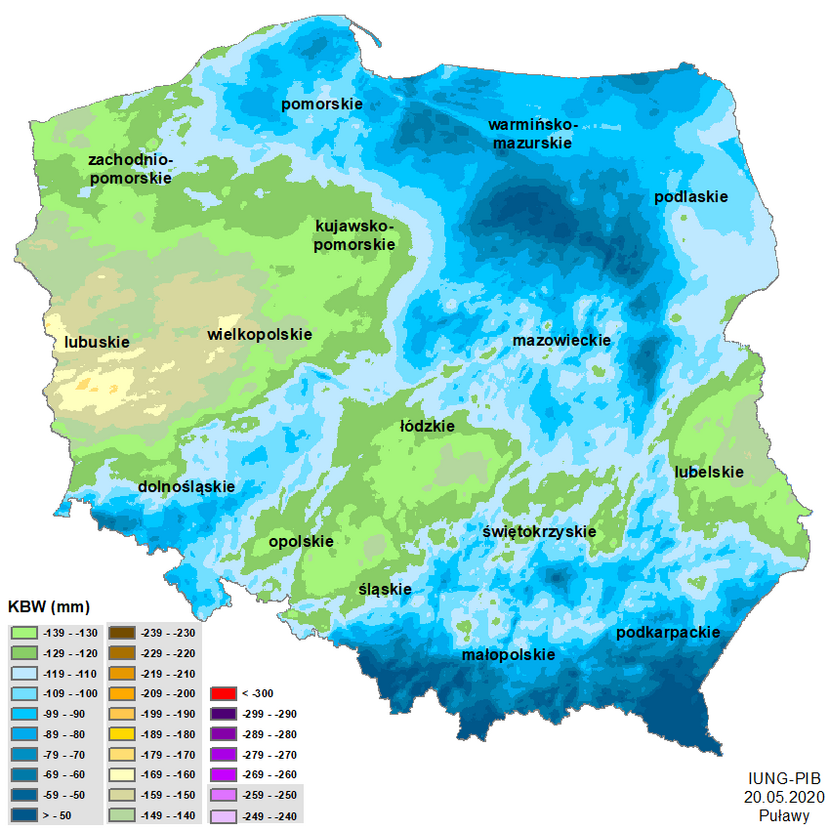Soil Institute reports on agricultural drought in Poland
For several years now, the Institute of Soil Cultivation and Soil Science (IUNG) has been running in Poland the Agricultural Drought Monitoring System. Its task is to indicate areas where potential yield losses occurred due to drought conditions for crops, as specified in the Act on payments for insurance of agricultural crops and livestock in Poland. In accordance with this Act, drought means damage caused by occurrence in any sixty-day period from March 21 to September 30 of the climatic water balance (KBW) below a specified value for individual species or groups of crop plants and soil categories.

In the first reporting period this year, i.e. from 21 March to 20 May 2020, IUNG developed the values of the climate water balance (KBW) for all, i.e. 2 477 communes of Poland, and based on soil categories, determined the state of threat of agricultural drought. The Institute notes the occurrence of agricultural drought in some provinces and in certain crops.
Lack of sufficient rainfall, especially in the third decade of March and, to a large extent, also in April, caused a large water shortage in soil, which negatively affected winter cereal, strawberries and fruit shrubs, especially located on very light and light soils. The occurring water deficit on weak soils also caused losses in spring cereal, which resulted in poor plant sprouting. As many as 14 (out of 16) Polish provinces are threatened with those crop losses, according to IUNG.

The average value of the Climate Water Balance (KBW), on the basis of which the assessment of drought threat status was negative, was –100 mm. The lowest KBW values below -170 mm in the analyzed six decade period occurred in the Lubuskie province. The range from –150 to –169 mm was also recorded in the Wielkopolskie province. Low KBW values, i.e. from -120 to -149 mm, were recorded in a large area of north-west Poland and in the southern part of the Slaskie province, in the northern part of the Malopolskie province, in the Lubelskie province and in the northern areas of the Dolnoslaskie province.
In turn, the highest KBW values were recorded in areas of north-eastern Poland and in the south of the country: in the Carpathian Foothills, Western Beskids and the Sudety Foothills (Malopolskie and Podkarpackie provinces). This ratio ranged from –119 to above –50 mm.
Therefore, agricultural drought occurs in the following provinces: Lubuskie, Zachodniopomorskie, Opolskie, Wielkopolskie, Kujawsko-Pomorskie, Łódzkie, Lubelskie, Świętokrzyskie, Śląskie, Dolnośląskie, Mazowieckie, Pomorskie, Małopolskie and Podlaskie (see map of KBW).

- In the first reporting period from March 21 to May 20, 2020, the greatest threat of agricultural drought occurred among spring cereal crops. Drought in these crops was recorded in 833 Polish communes (33.63% of the country's communes), occurred in 14 provinces on the area of 10.14% of arable land - informs IUNG -PIB.
In the case of winter cereals, it occurred in 676 Polish communes (27.29% of the country's communes), in 11 provinces covering 7.72% of arable land.
Agricultural drought also occurred in the cultivation of strawberries (in 522 communes), fruit shrubs (in 166 communes), and in the cultivation of fruit trees (in 7 communes).
According to current weather conditions, crop losses due to water deficit, resulting in a decrease in yields by at least 20% on the scale of the commune in relation to the yields obtained in average multi-annual weather conditions, occurred in the cultivation of spring and winter cereals, strawberries, fruit shrubs and fruit trees.
Source: IUNG, topagrar.pl, farmer.pl